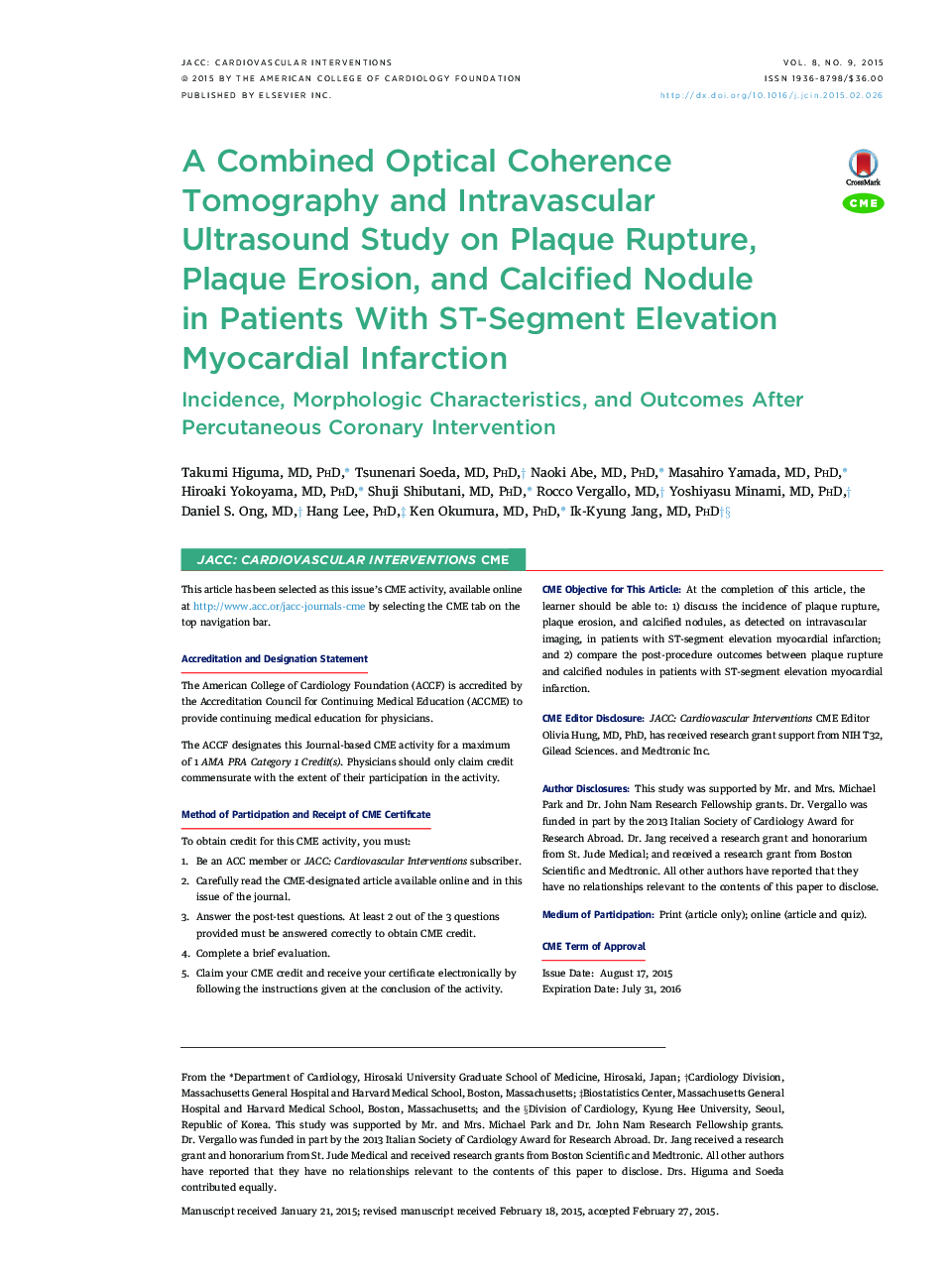| Article ID | Journal | Published Year | Pages | File Type |
|---|---|---|---|---|
| 5981209 | JACC: Cardiovascular Interventions | 2015 | 11 Pages |
ObjectivesThis study sought to evaluate the incidence of plaque rupture (PR), plaque erosion (PE), and calcified nodule (CN) using optical coherence tomography (OCT) in patients with ST-segment elevation myocardial infarction (STEMI); to compare detailed morphologic plaque characteristics of PR, PE, and CN with optical coherence tomography and intravascular ultrasound; and to compare the post-procedure outcomes among PR, PE, and CN.BackgroundThe incidence and detailed morphologic characteristics of PR, PE, and CN in STEMI patients and their outcome after percutaneous coronary intervention (PCI) are unknown.MethodsA total of 112 STEMI patients who underwent PCI within 12 h from symptom onset were included. Both optical coherence tomography and intravascular ultrasound were performed following aspiration thrombectomy.ResultsThe incidence of PR, PE, and CN was 64.3%, 26.8%, and 8.0%, respectively. PE and CN, compared with PR, had more fibrous plaque (p < 0.001 and p < 0.001) and less thin-cap fibroatheroma (p < 0.001 and p < 0.001) as well as smaller plaque burden (p = 0.003 and p = 0.001) and remodeling index (p = 0.003 and p < 0.001). PE had greater plaque eccentricity index than PR and CN (p < 0.001 and p < 0.001). CN had greater calcified arc and shallower calcium than PR (p < 0.001 and p < 0.001) or PE (p < 0.001 and p < 0.001). More than one-half of CN had negative remodeling. PE had a lower incidence of no-reflow phenomenon after PCI than PR (p = 0.011).ConclusionsPE was the underlying mechanism in one-fourth of STEMI. PE was characterized by eccentric fibrous plaque. CN was characterized by superficial large calcium and negative remodeling. PE was associated with less microvascular damage after PCI.
